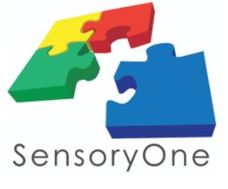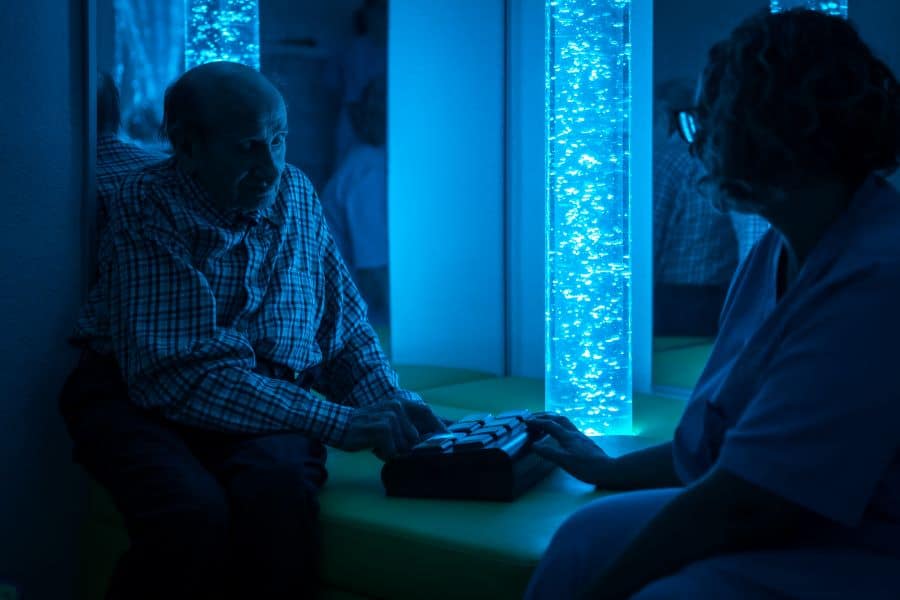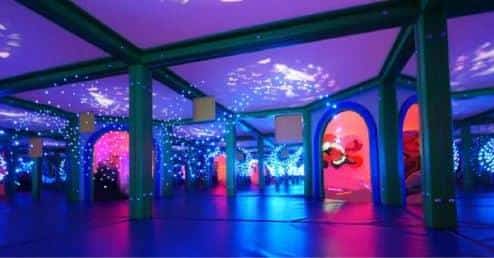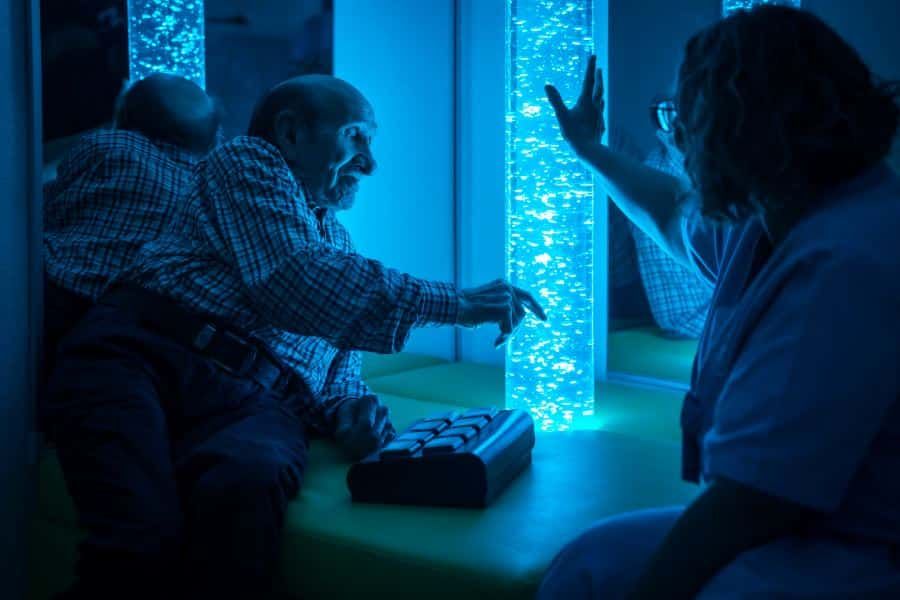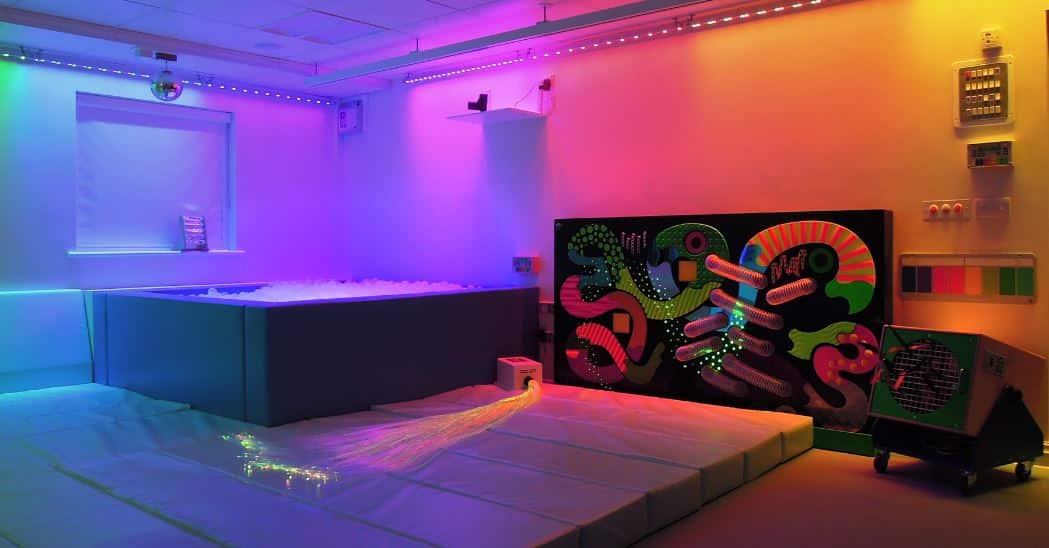Creating a sensory room can be life-changing for individuals with autism, ADHD, sensory processing disorders, and cognitive challenges. These specialized spaces provide therapeutic benefits in schools, healthcare settings, and community centers. However, funding a sensory room can be a challenge, particularly for organizations working within tight budgets. Fortunately, there are various grants, subsidies, and strategic budgeting options that can help turn your vision into reality.
Did you know? At Sensory One, we help schools, therapy centers, and long-term care facilities design fully customized sensory spaces that fit their budget. We specialize in designing customized sensory environments that meet a variety of needs and budgets. Explore our range of sensory wall panels and interactive projection systems to find the perfect solution for your space.
Understanding the Costs of a Sensory Room
The cost of a sensory room varies widely depending on its size, the type of equipment used, and whether you require custom installation. A basic setup might include soft seating, tactile panels, and calming lights, while more advanced rooms feature interactive projection technology, bubble tubes, and multisensory walls.
- Basic sensory corner: $2,000 – $5,000
- Mid-range sensory room: $5,000 – $15,000
- Advanced multisensory environment: $15,000+
While these numbers may seem daunting, multiple funding sources can help cover the cost. Below are some of the best strategies to secure financial support.
1. Government Grants & Funding Programs
Government grants in both the USA and Canada are among the best sources of funding for sensory rooms, particularly for schools, non-profits, and healthcare facilities. Some programs to explore include:
- U.S. Individuals with Disabilities Education Act (IDEA) Grants: Schools can access funding under IDEA for special education programs, including sensory spaces.
- Christopher & Dana Reeve Foundation Quality of Life Grants: Provides funding for projects that enhance accessibility and inclusion for individuals with disabilities. (USA)
- The Doug Flutie Jr. Foundation for Autism Grants: Supports schools and organizations providing sensory resources for children with autism. (USA)
- Kaboom! Play Everywhere Challenge: Offers funding for play spaces, which can include sensory-friendly environments for children. (USA)
- Canada Student Well-Being Initiatives: Many provincial governments offer funding for inclusive education and mental health support in schools. Check with your provincial Ministry of Education.
- Ontario Trillium Foundation (OTF): This grant supports non-profits that enhance community well-being, including sensory spaces.
- Jordan’s Principle: This Canadian federal initiative provides funding for First Nations children to access health and education services, including sensory resources.
To maximize your chances of approval, tailor your grant application to highlight how the sensory room will meet specific needs within your community.
2. Corporate and Private Grants
Many businesses and private organizations support initiatives that promote accessibility and inclusion. Some options to explore, both in the USA and Canada, include:
- Walmart Foundation – Provides local community grants for educational and accessibility-focused projects.
- Target Foundation – Supports initiatives in education, childhood development, and community wellness.
- Bank of America Charitable Foundation – Funds projects that enhance community well-being, including sensory-friendly spaces.
- The Home Depot Foundation – Offers grants to organizations improving accessibility in schools and healthcare settings.
- Lowe’s Hometown Program – Provides grants for community improvement projects, including sensory room installations.
- The Rick Hansen Foundation: Offers funding for accessibility projects that improve the lives of individuals with disabilities. (Canada)
- Local Credit Unions & Banks: Many financial institutions have community investment programs that provide funding for educational and healthcare initiatives.
- Corporate Social Responsibility (CSR) Programs: Large companies like Canadian Tire’s Jumpstart program and TD Bank’s Community Giving often support projects that enhance child development and accessibility.
3. Fundraising & Community Support
Hosting fundraising events can be a great way to gather support from the local community. Here are some effective ideas:
- Crowdfunding Campaigns: Platforms like GoFundMe or Kickstarter can help raise awareness and collect donations for your sensory room project.
- Charity Events: Host a silent auction, trivia night, or community fun run with proceeds going toward your sensory room.
- Partnerships with Local Businesses: Approach local companies for sponsorships in exchange for recognition within the sensory room.
4. School and Health Care Funding Sources
If you are a school or healthcare facility, additional funding opportunities may be available:
- Special Education Budgets: Many schools have designated budgets for assistive technology and learning environments. A well-researched proposal can help allocate funds to a sensory room.
- Hospital & Healthcare Grants: Healthcare institutions may access funding through provincial health ministries or charitable hospital foundations.
- Insurance & Health Benefits: Some insurance plans cover sensory equipment under medical necessity for individuals with sensory processing disorders.
5. Smart Budgeting Strategies
If grant applications take time, consider budget-friendly ways to create a sensory space:
- Start Small: Begin with a sensory corner that can be expanded over time as more funds become available.
- Choose Multi-Functional Equipment: Opt for items like interactive projectors that offer a variety of engagement options in one system.
- Buy in Phases: Instead of purchasing everything at once, plan phased installations to spread costs over time.
Bringing Your Sensory Room to Life
Funding a sensory room requires persistence and creativity, but with the right approach, it is entirely possible. Whether through grants, corporate sponsors, or community fundraising, financial resources are available to support your project.
For more resources on grant/funding support programs and designing sensory rooms, contact us at SensoryOne.

